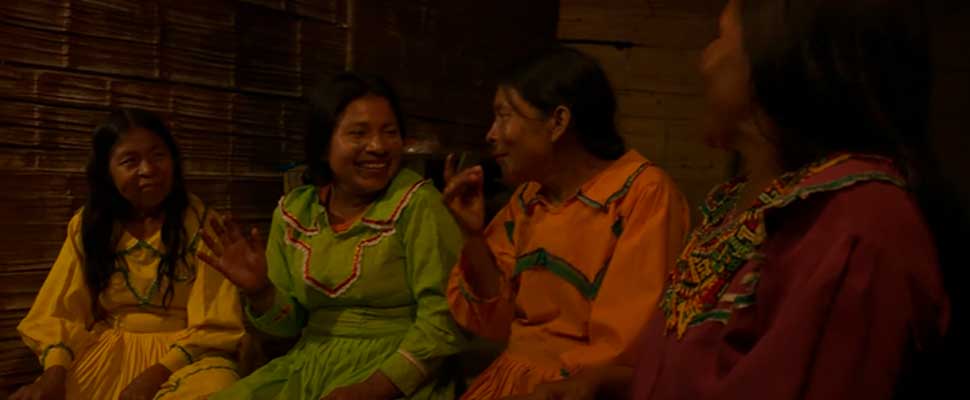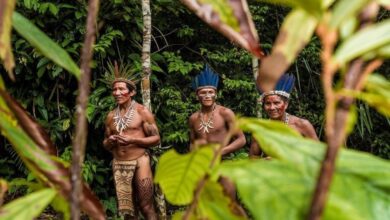Biabu Chupea: Rights of Embera Chami Women
Did you know that in Colombia more than 65 languages are spoken? You may also be astonished to find out that this country is the second most ethnically diverse in the Americas, after Brazil.

The Woman Post | Catalina Mejía Pizano
Listen to this article
The documentary "Biabu Chupea," was launched on September 9 in some Colombian cities such as Bogota, Medellin, and Cali. The film by Priscila Padilla shares some personal reflections of Embera Chami women and their bodies which are shaped by their culture and sense of territory.
It is worth highlighting that the Embera peoples are the second largest indigenous group in Colombia, with a population of approximately 250,000. Most of them are settled near the San Juan River and in the towns of Pueblo Rico and Mistrató, located in the Risaralda Department. This new documentary, by the Colombian producer and director, Padilla, shares the view of various women from the Embera Chami indigenous population, after going through Female Genital Mutilation.
Luz, a young Embera Chami woman, who is seventeen years old and came to Bogota due to forced displacement, discovers that her body is different from other women since she does not have a clítoris. When Luz realizes that a part of her body was mutilated, she starts to wonder about her relationship with her body, pleasure, and her role as a woman in the Embera Chami community. The documentary reveals the reality of many women in Colombia, which most local people ignore. It recently obtained a prize in the International Documentary Film Category at the Monterrey International Film Festival.
Also read: DARE TO VISIT THESE 7 LITTLE-KNOWN CITIES
The director of the film, Priscila Padilla, has centered her documentaries on the daily life of women. She has launched movies such as “The Guests of War” (2006), “We were born on December 31” (2011), and “The Eternal Night of 12 Moons” (2013), which was awarded several international prizes. In a recent interview, Padilla mentioned that the documentary “Biabu Chupea,” was born when she was taking a walk in the city center of Bogota, and she saw many Embera Chami women sewing and covering their heads. “They were wearing colorful dresses and many collars. When I approached them, they seemed to be uncomfortable and after various encounters, we all decided to take the risk of telling their story out loud.”
Padilla also mentioned, “Luz, is not the real name of the main character. She could be named different but all of the women involved in the documentary agreed on this name, because Luz means light, and after many generations suffering from Female Genital Mutilation, light entered the path of many women to illuminate them and give them strength to finally speak about their realities.” Padilla remarks that working on the documentary was very enlightening since she spent a lot of time with the Embera women in a community where Female Genital Mutilation has now ceased to exist.
“Biabu Chupea” which lasts 83 minutes, has various women narrators, and besides the topic of Female Genital Mutilation, it also depicts the reality of indigenous women who are victims of forced displacement and come to the capital city of Colombia to sell their fabrics and to negotiate them in a language they don’t speak. The documentary invites all of its women audience to reflect upon a complex question: do we have the freedom to make decisions about our bodies? At the Monterrey Film Festival, the film won a prize "Because of the disturbing nature of its speech and the urgent need for a call on human rights.”




